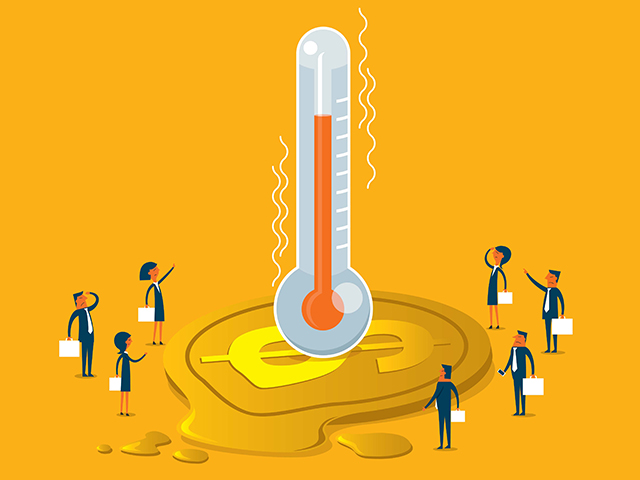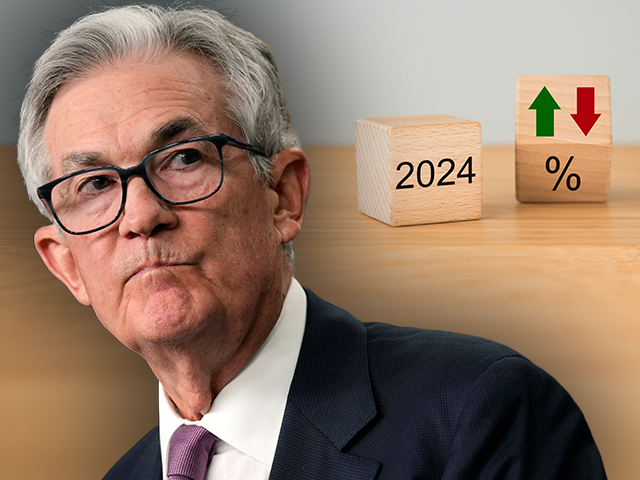Rate Cut Party Time Breaks Out on Wall Street
One month’s worth of data does not make a trend—unless it fits the consensus narrative that the Fed is going to cut interest rates a few times this year.
Inflation in the U.S. eased slightly in April, the first retreat from rising price pressures in six months. After the alarming reports in the first quarter of this year, this was a welcome reprieve, but it should not be read as an all-clear signal for rate cuts.
The consumer price index rose by 0.3 percent, which was in line with expectations and below the 0.4 percent recorded in March. The decline in the pace of inflation is somewhat exaggerated by rounding. Unrounded, inflation came in at 0.378 percent in March and fell to 0.313 in April, a decline of just 0.065 percent rather than the 0.1 percent difference in the rounded figure.
Although it is good to see inflation move in the right direction, the month-to-month rate is still quite high. It annualizes to a rate of 3.8 percent inflation, and it is the highest monthly rate apart from the prior two months since September. In other words, inflation cooled, but it cooled down to what is still a simmer.

(iStock/Getty Images)
The year-over-year rate ticked down to 3.4 percent from 3.5 percent. Apart from the prior month, this is the highest 12-month rate of inflation since September. The three-month annualized rate is 4.6 percent, and the six-month annualized rate is 3.7 percent.
Inflation Was Much Cooler When Powell Pivoted
To put that into perspective, back in December when the Fed famously “pivoted” to a bias in favor of rate cuts the one-month annualized rate was 1.2 percent, and the 12-month rate was 3.1 percent. The three-month annualized rate was 2.2 percent, and the six-month annualized rate was 3.1 percent.
In other words, the trend in inflation that encouraged the Fed to give up its plans for one more rate hike and start signaling its plan to cut rates was significantly lower than it is today. Would the Fed’s pivot have happened if it were looking at a 4.6 percent three-month annualized rate back in December? Probably not. Which raises the question of whether the Fed should still be sticking to the view that its next move will be a cut.
Core inflation, which excludes energy and food prices, also slowed from 0.4 percent month-over-month to 0.3 percent. The 12-month rate declined to 3.6 percent from 3.8 percent. The one-month annualized rate is also 3.6 percent, the three-month annualized rate is 4.1 percent, and the six-month 4.1 percent. That compares to the pivot trend rates of 3.4 percent for three-months and 2.9 percent for six-months.
There was less movement at the center of the consumer price index than around its edges. Median CPI, as calculated by the Federal Reserve Bank of Cleveland, rose 0.348 percent in April after climbing 0.354 percent in March and 0.372 in February. That rounds to a decline from 0.4 percent in March and February to a 0.3 percent change in April, but the unrounded difference is much smaller. Annualized, median inflation rose 4.3 percent in April just as it did in March.
The Cleveland Fed’s 16 percent trimmed mean figure came in at 0.3 percent for April, matching the March figure. Unrounded, however, there was a bit of progress, with April at 0.27 percent and March at 0.32 percent. Still, the implication from these measures of median and trimmed mean inflation is that underlying inflationary pressures did not weaken very much at all in April.
Core services excluding shelter—the measure Jerome Powell once called “super core”—is still very hot, rising at a 5.7 percent one-month annualized rate, a 6.8 percent three-month annualized rate, and a 6.5 percent six-month annualized rate. Back at the pivot meeting, Powell was looking at a 5.4 percent three-month annualized rate and a 4.4 percent six-month annualized rate. Powell has in the past mentioned that he pays particular attention to the six-month rate, and that’s more than 200 basis points higher than it was in December.
Don’t Expect a September Rate Cut
When inflation first began to surge higher in January, Wall Street dismissed the figures as a “bump” on the “last mile” toward the Fed’s target of two percent inflation. The phrase “one month is not a trend” became the battle cry of the doves. Now that we have one month of falling inflation, however, everything is different and Wall Street is now penciling in a rate cut for September.
That seems unlikely. There will only be four more CPI and four more personal consumption expenditure price index reports between now and the September meeting of the Federal Open Market Committee. After watching inflation decline last year and then revive, its likely the Fed will need to see more benign reports than that to restore its confidence that inflation is headed back down to target.
A lot of Fed watchers are convinced that the Fed will cut in November, when the Fed meets on the two days following election day. While that’s not completely out of the question, we would expect that the Fed would likely want to watch the reaction of financial markets and other real-time indicators to the election results before moving rates down. That’s even more true if election day is followed by a chaotic reaction by the supporters of whichever candidate loses.
That leaves December as the earliest likely date for a Fed cut—even if all the rest of the data this year indicates declining inflation. If the April decline turns out to be a “bump” on the road back to higher inflation, however, the Fed may have to re-pivot back to hiking.

COMMENTS
Please let us know if you're having issues with commenting.